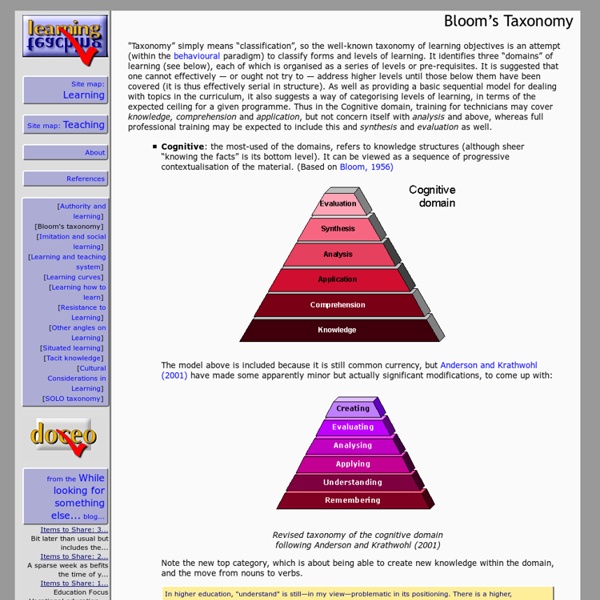How to Encourage Higher Order Thinking
Why Use This Tip What To Do Why Use This Tip A main goal of educators today is to teach students the skills they need to be critical thinkers. After reading a book about Martin Luther King or studying the Civil Rights era, you could choose to ask a child a simple question such as “Who is Martin Luther King, Jr.?”. back to top What To Do Families and out-of-school educators can play a significant role in encouraging higher order thinking with their kids and teens, even when having a casual conversation. Below are more examples of questions to ask your child to spark discussion, make them think critically, and encourage higher order thinking. When reading a book: “What do you think might happen next?” When visiting an unfamiliar place: “How is __________ similar to/different from __________?” When making an important decision: “How would you rank __________?” Try asking children and teens these questions at home and in a variety of educational and non-educational settings.
Left Brain Vs. Right Brain: The Eye Opening Insights
We have given you voluminous information about your brain and how it functions. However, this one is probably one of the most worthwhile to know. But wait, before presenting the data, we have some questions for you: If you are philosophical and have a way with people, what side of your brain do you use most of the time? What is the relevance of this information, anyway? Source:Life Hack Related:
Home
Tagxedo - Word Cloud with Styles
Demand High ELT | A discussion about re-inventing our profession
Study with ADHD: Managing Attention Deficit in High School
For students with ADHD, studying for a test can be daunting. Luckily, there’s new research that shows that students might not need to spend more time studying, but need to study differently. James and John, identical twins with ADHD, are taking the same biology class. They study for the same amount of time, yet James gets an A on the exam and John gets a C+. Why the difference? Which Study Technique Works Best? John studied diligently for three hours on Thursday night, the day before the test. Eighty-four percent of students study by rereading the textbook, as John did. Research shows that the number-one way to study is to make a practice test. Cramming Doesn’t Work What else did James do right? Quick-Fix Solutions for a Broken IEP or 504 Plan John worked hard to study for his exam, and skipped soccer practice on Thursday evening to put in extra time. James, on the other hand, knew that when boredom set in, he needed shorter work periods or a different place to study. Review Before Bed
5 Powerful Questions Teachers Can Ask Students
My first year teaching a literacy coach came to observe my classroom. After the students left, she commented on how I asked the whole class a question, would wait just a few seconds, and then answer it myself. "It's cute," she added. Um, I don't think she thought it was so cute. So that day, I learned about wait/think time. Many would agree that for inquiry to be alive and well in a classroom that, amongst other things, the teacher needs to be expert at asking strategic questions, and not only asking well-designed ones, but ones that will also lead students to questions of their own. Keeping It Simple I also learned over the years that asking straightforward, simply-worded questions can be just as effective as those intricate ones. #1. This question interrupts us from telling too much. #2. After students share what they think, this follow-up question pushes them to provide reasoning for their thinking. #3. #4. #5. How do you ask questions in your classroom?



